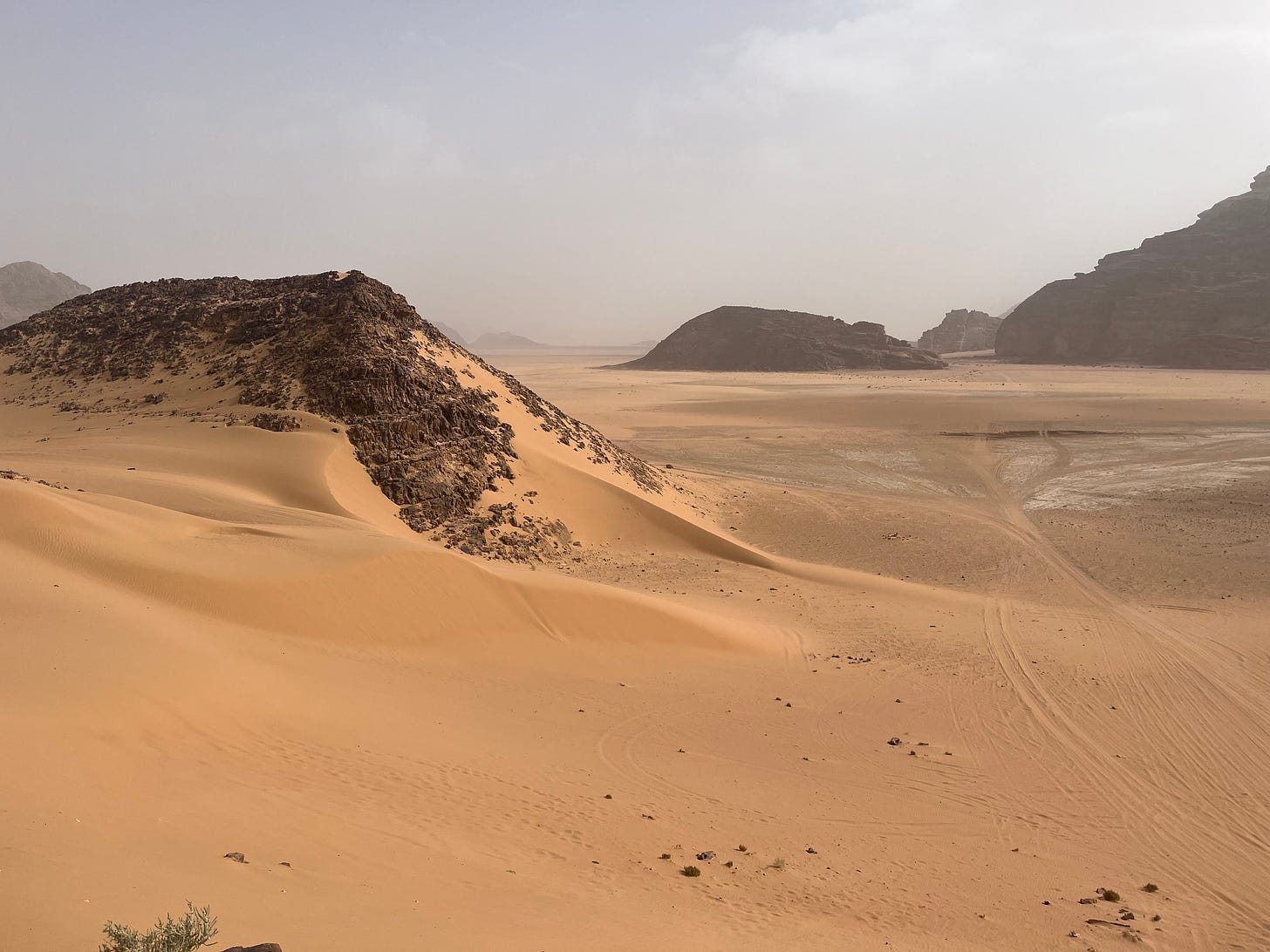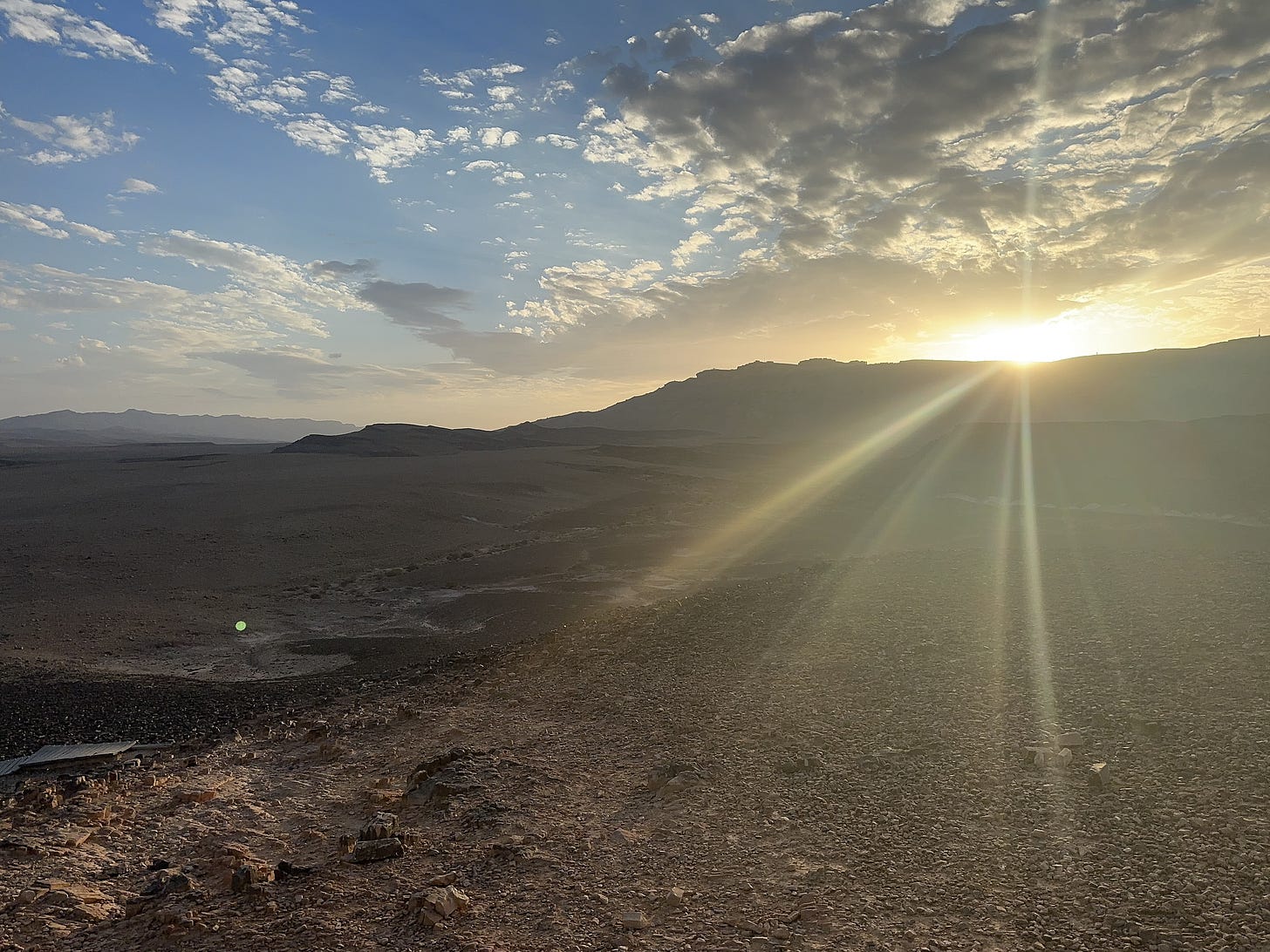I have been on vacation for the last week, touring the Jordanian Wadi Run – aka the Valley of the Moon – and Negev deserts and sleeping under the stars. It has been a wonderful experience. Going off-grid is sometimes a very good discipline, but I couldn’t help thinking about this blog post examining the similarities of the desert and the tech industry.
So, please indulge me and let me share these thoughts with you.
The desert is a harsh and unforgiving environment, but it is also a place of incredible beauty and complexity. The bedouins, plants, insects and animals that live in the desert have adapted to the extreme conditions in a variety of ways, and the ecosystem as a whole is a delicate balance of life and death.
One of the most striking things about the desert ecosystem is its simplicity. There are relatively few species of plants and animals in the desert, compared to grassland or tropical rainforest ecosystems. However, the interactions between these species are very complex. For example, many desert plants are very effective in absorbing the tiny amount of dew in the air and infinitesimally small rainwater in the atmosphere. Additionally, they have symbiotic relationships with fungi and bacteria that help them to survive in the dry conditions. And many desert animals have evolved to eat a variety of different plants and animals, in order to get the nutrients they need. For instance, I ran into a couple of feral cats living in the desert hills near our encampment. Amazing.
The complexity of the desert ecosystem is a reminder that even the simplest systems can be very complex and interconnected. This is also true of the technology ecosystem. The technology ecosystem is made up of a variety of different companies, services firms, and individuals. Each of these players has its own unique role to play, and the ecosystem as a whole is a complex web of interactions.
Just as the desert ecosystem is balanced on a knife edge, the technology ecosystem is also constantly evolving. New technologies are emerging all the time, and existing technologies are constantly being improved. This evolution can be disruptive in the best Clayton Christensen kind-of-way, but it is also essential for the continued growth and success of the technology ecosystem.
Here are some of the ways in which the totality of the desert and its complex interactions with nature can be seen as a metaphor for the technology ecosystem:
Diversity: Both the desert ecosystem and the technology ecosystem are made up of a diverse range of players. In the desert ecosystem, there are plants and animals of all shapes and sizes, each with its own unique role to play. In the technology ecosystem, there are companies of all sizes, from startups to large enterprises. There are also a variety of different types of organizations involved in the technology ecosystem, such as lawyers, accountants, resellers and distributors, universities and research labs, and government agencies.
Interdependence: The plants and animals in the desert ecosystem are all interdependent on each other. For example, many desert plants rely on insect pollinators – like beetles – to reproduce. In the technology ecosystem, companies are also dependent on pollinators. For example, a software company may rely on a freemium, open source, SEO, social media to get trials and messages out, and cloud computing providers to host its applications, etc.
Competition: There is a lot of competition for resources in the desert ecosystem. For example, plants compete for water and sunlight, and animals compete for food. In the technology ecosystem, there is also competition for resources, such as capital, customers, market share, talent and many other sources of growth.
Innovation: The desert ecosystem is constantly evolving, and new species are emerging all the time. This is also true of the technology ecosystem. New technologies are emerging all the time, and existing technologies are constantly being improved.
In the end, the desert ecosystem and the technology ecosystem have much in common. By understanding these parallels, we can gain insight into how to sustain a healthy technology ecosystem that continues to blossom in the future through diversity, competition, and innovation. The harmony between organisms, resources and their environment are essential in both the desert and technology ecosystems for long-term success.







I also often share that startups ate often like traveling through a desert. It’s a harsh and inhospitable environment, where one must struggle to survive. While traveling you might spy a beautiful oasis, but as you get closer it’s actually a mirage. I think this is an appropriate analogy for one seeking PMF; it’s a journey and the early signs of prospective success can actually lead to no where!
I agree, Bob. And on the way to PMF, you can get real thirsty.